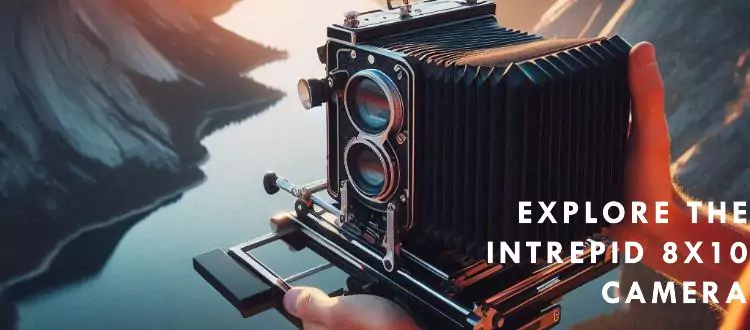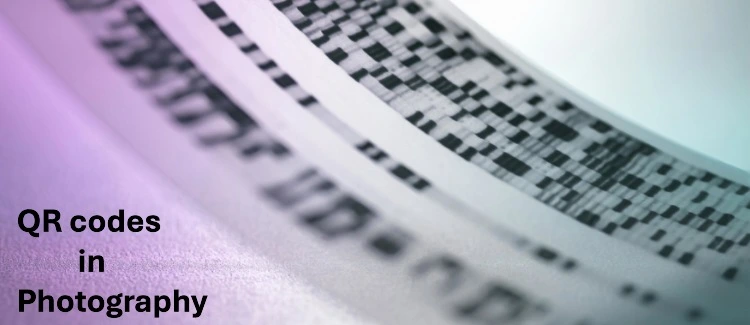Theodore Lowe, Ap #867-859
Sit Rd, Azusa New York
Find us here
Exploring Large Format With the Intrepid 8X10: Ultimate Guide

Large format photography captures incredible detail and depth, often desired by professionals. The Intrepid 8x10 camera makes this art form accessible to a wider audience. Its lightweight design and affordable price set it apart from traditional large format cameras. Users can easily transport it without sacrificing image quality.
This camera suits both studio and outdoor photography. With it, you can achieve stunning images that highlight intricate details. The Intrepid 8x10 is perfect for photographers looking to expand their creative horizons. It provides an excellent blend of functionality, affordability, and ease of use.
Getting To Know The Intrepid 8x10
The Intrepid 8x10 camera is a gateway to large format photography. This camera opens a world of creativity and detail. With it, photographers can explore new dimensions in their work. Let's dive into its features, build, and design.
Features Of The Intrepid 8x10
The Intrepid 8x10 boasts several standout features:
-
Lightweight: Weighs only 2.2 kg, making it portable.
-
Versatile Movements: Offers tilt, swing, and rise/fall adjustments.
-
Easy Setup: Quick assembly for immediate use.
-
Durable Construction: Made from high-quality materials.
-
Cost-Effective: Affordable entry into large format photography.
Build And Design
The build and design of the Intrepid 8x10 are noteworthy. It's crafted with a focus on functionality and style:
|
Aspect |
Details |
|---|---|
|
Material |
High-grade wood and aluminum. |
|
Weight |
2.2 kg |
|
Dimensions |
400mm x 400mm x 50mm |
|
Color |
Black with natural wood finish. |
The camera's design is sleek yet functional. Its wooden frame adds a classic touch while ensuring durability. The aluminum components enhance its strength without adding excess weight.
Photographers appreciate the camera's easy setup. The intuitive design ensures that even beginners can assemble and use it quickly. This makes it an excellent choice for those new to large format photography.
In summary, the Intrepid 8x10 offers a perfect blend of features, build, and design. It is a remarkable tool for photographers eager to explore the world of large format photography.
Setting Up Your Intrepid 8x10
Exploring large format photography with the Intrepid 8x10 is exciting. Setting up your Intrepid 8x10 correctly ensures great results. This guide will help you get started with ease.
Unboxing And Assembly
Your Intrepid 8x10 arrives in a sturdy package. Carefully open the box and lay out the contents. You should find:
-
Intrepid 8x10 Camera Body
-
Bellows
-
Lens Board
-
Instructions Manual
Place the camera body on a stable surface. Attach the bellows to the front standard. Secure it by tightening the knobs. Next, attach the lens board. Ensure it is firmly in place.
Initial Setup Tips
Follow these tips for a smooth initial setup:
-
Choose a level surface: This ensures stability during use.
-
Check the bellows: Make sure there are no light leaks.
-
Lens alignment: Properly align the lens for sharp images.
-
Tripod setup: Use a sturdy tripod to support the camera.
-
Read the manual: The manual provides useful insights and troubleshooting tips.
Setting up your Intrepid 8x10 can be fun and rewarding. Take your time and enjoy the process.
Choosing The Right Lens
Exploring large format photography with the Intrepid 8X10 can be exciting. The right lens is crucial. It impacts image quality and creative potential. This section helps you choose the best lens for your Intrepid 8X10.
Lens Compatibility
Not all lenses fit the Intrepid 8X10. Compatibility is key. Ensure the lens covers the 8x10 film area. Large format lenses usually list their coverage.
Check the lens mount. The Intrepid 8X10 uses a standard lens board. Make sure your lens fits this board.
|
Lens Type |
Coverage |
Compatibility |
|---|---|---|
|
Wide-Angle |
210mm |
Yes |
|
Standard |
300mm |
Yes |
|
Telephoto |
450mm |
Yes |
Recommended Lenses
Some lenses perform exceptionally well with the Intrepid 8X10. Here are a few recommendations:
-
Schneider Kreuznach 300mm f/5.6 - Excellent for portraits.
-
Fujinon 240mm f/9 - Great for landscapes.
-
Rodenstock 150mm f/5.6 - Ideal for wide-angle shots.
These lenses offer superb image quality. They also cover the 8x10 film area adequately.
Each lens has its unique strengths. Choose based on your photography style. Wide-angle lenses are perfect for landscapes. Standard lenses are versatile. Telephoto lenses excel in capturing distant subjects.
Film Selection For 8x10 Photography
Choosing the right film for your Intrepid 8x10 camera is essential. The film you choose will greatly impact your final image. Let's explore the different types of film and where to buy them.
Types Of Film
There are various types of film available for 8x10 photography. Each type has its unique characteristics. Here are some popular choices:
-
Black and White Film: Known for its classic look and high contrast.
-
Color Negative Film: Offers rich colors and a wide dynamic range.
-
Color Reversal Film: Produces positive images and vibrant colors.
-
Specialty Films: Includes infrared, high ISO, and low ISO films.
|
Type of Film |
Characteristics |
Best For |
|---|---|---|
|
Black and White Film |
High contrast, classic look |
Portraits, landscapes |
|
Color Negative Film |
Rich colors, wide dynamic range |
General photography |
|
Color Reversal Film |
Positive images, vibrant colors |
Slide shows, exhibitions |
|
Specialty Films |
Infrared, high ISO, low ISO |
Experimental photography |
Where To Buy Film
Finding quality film for your Intrepid 8x10 camera is crucial. Here are some trusted sources:
-
B&H Photo Video: A wide selection of film types.
-
Adorama: Known for competitive prices and excellent service.
-
Freestyle Photographic Supplies: Offers unique and hard-to-find films.
-
Amazon: Convenient and often has good deals on film packs.
Always check product reviews before purchasing. Ensure the film is fresh and stored properly. Happy shooting with your Intrepid 8x10 camera!
Techniques For Shooting With The Intrepid 8x10
Exploring large format photography with the Intrepid 8x10 can be exciting. This camera offers a unique experience. Here, we explore techniques for shooting with this impressive tool.
Focusing And Composing
Focusing and composing with the Intrepid 8x10 involves precision. Start by setting up your tripod. Make sure it's stable. Next, attach the camera securely. Use the ground glass at the back for composing.
Use the focus knobs to adjust sharpness. Ensure your subject is clear. A loupe can help in fine-tuning the focus. Compose your shot carefully. The large ground glass allows for detailed composition.
Use a dark cloth over your head. This helps in seeing the image on the ground glass. Make sure all elements are in place. Double-check the edges of the frame.
Exposure Tips
Proper exposure is crucial in large format photography. Use a light meter to measure the light. Take readings from different areas of your scene. Determine the best exposure settings.
Consider the reciprocity failure of the film. Long exposures may need adjustments. Check your film's documentation for specifics. Make necessary adjustments to your exposure time.
Use the zone system for better control. Place important elements in desired zones. Adjust your exposure accordingly. This ensures a balanced and well-exposed image.
Bracket your shots when unsure. Take multiple exposures at different settings. This increases your chances of a perfect shot.
|
Exposure Setting |
Details |
|---|---|
|
Shutter Speed |
Control the duration of light exposure. |
|
Aperture |
Adjust the depth of field and light intake. |
|
ISO |
Film sensitivity to light. |
Developing 8x10 Film
Exploring the realm of large format photography with the Intrepid 8x10 is exhilarating. Developing 8x10 film can be equally rewarding. You have two main options: home development or using professional labs. Each approach has its own set of advantages.
Home Development
Home development offers complete control over the process. It requires some essential equipment and a dedicated space.
|
Equipment |
Description |
|---|---|
|
Developing Tank |
A large tank designed for 8x10 film. |
|
Chemicals |
Developer, stop bath, fixer, and a wetting agent. |
|
Darkroom or Changing Bag |
A light-tight space to load film. |
|
Thermometer |
To monitor chemical temperatures. |
Follow these simple steps to develop your 8x10 film at home:
-
Prepare your chemicals according to the instructions.
-
Load your film into the developing tank in complete darkness.
-
Pour in the developer and agitate gently for the recommended time.
-
Drain the developer and pour in the stop bath.
-
After the stop bath, pour in the fixer.
-
Wash the film in water to remove all chemicals.
-
Use a wetting agent to prevent water spots.
-
Hang the film to dry in a dust-free environment.
Home development can be a rewarding experience, allowing you to control every aspect of your film's outcome.
Professional Labs
Professional labs are a convenient option for developing 8x10 film. They offer high-quality results without the need for personal equipment.
-
High-quality chemical processes.
-
Experienced technicians handle your film with care.
-
Time-saving, as you do not need to develop the film yourself.
Finding a reputable lab is key. Look for reviews and recommendations from fellow photographers. Most labs offer online services, making the process even more convenient.
Both home development and professional labs have their benefits. Your choice depends on your preferences and resources. Whether at home or in a lab, developing 8x10 film can elevate your photography experience.
Troubleshooting Common Issues
Exploring large format photography with the Intrepid 8X10 can be thrilling. Yet, like any creative pursuit, it comes with challenges. Let's tackle some common issues.
Light Leaks
Light leaks can ruin your photos. They occur when unwanted light enters your camera.
Check your bellows for holes or cracks. These can be patched with tape or a repair kit.
Ensure the film holder is properly seated. If it's loose, light can seep in. Always check the camera back for any gaps.
-
Inspect the dark slide for bends or warps.
-
Use a dark cloth to cover the camera during exposure.
Film Loading Problems
Loading film into your Intrepid 8X10 can be tricky. Let's simplify the process.
-
Load the film in a dark room. Any light can expose the film.
-
Ensure your hands are clean and dry. Dirt or moisture can damage the film.
-
Align the notches of the film with the holder.
Place the film emulsion side down. This side is usually smoother. Insert the film gently to avoid bends or scratches.
Close the film holder securely. Ensure the dark slide is fully inserted to prevent light leaks.
|
Common Issue |
Solution |
|---|---|
|
Light Leaks |
Patch bellows, check film holder, use dark cloth |
|
Film Loading |
Load in dark, clean hands, align notches |
Showcasing Your Work
Exploring large format photography with the Intrepid 8X10 is an exciting journey. One of the most rewarding aspects is showcasing your work. Whether you choose to scan and digitize your images or print and display them, the process brings your creations to life. Let's dive into the ways you can present your stunning photographs.
Scanning And Digitizing
Scanning your large format negatives preserves your work digitally. High-quality scanners capture the fine details of your images. Consider using a drum scanner for the best results. Flatbed scanners offer a more affordable option.
Digital files allow you to share your work online. You can post them on social media or your portfolio website. Digital storage also protects your photos from physical damage.
Editing software like Adobe Photoshop or Lightroom can enhance your scanned images. Adjust the contrast, brightness, and colors to match your vision. Metadata tagging helps organize and find your files easily.
Printing And Displaying
Printing your photos makes your art tangible. Choose high-quality photo paper to ensure longevity. Archival paper and pigment-based inks are excellent choices.
The choice of printer also matters. Inkjet printers provide detailed and vibrant prints. Laser printers work faster but may lack some color depth.
|
Printer Type |
Advantages |
Disadvantages |
|---|---|---|
|
Inkjet |
High detail, vibrant colors |
Slower, expensive ink |
|
Laser |
Fast, cost-effective |
Less color depth |
Once printed, consider framing your photos. Frames protect and enhance the presentation. Choose frames that complement your photography style.
Displaying your work in galleries or exhibitions brings it to a wider audience. Ensure proper lighting to highlight the details. Use soft, even lighting to avoid harsh shadows.
Showcasing your work is a fulfilling part of the photographic process. Whether digital or print, it allows you to share your vision with the world.
Conclusion
The Intrepid 8X10 opens up new creative possibilities for photographers. Its affordability and portability make it a standout choice. Whether you're a seasoned pro or a beginner, this camera offers exceptional value. Embrace the world of large format photography and elevate your art with the Intrepid 8X10.
Related blog posts
QR Codes in Photography: Unlocking Creative Possibilities
Imagine transforming your photography into an interactive experience that captivates your audience. QR codes are revolutionizing the way we share and engage with images.


